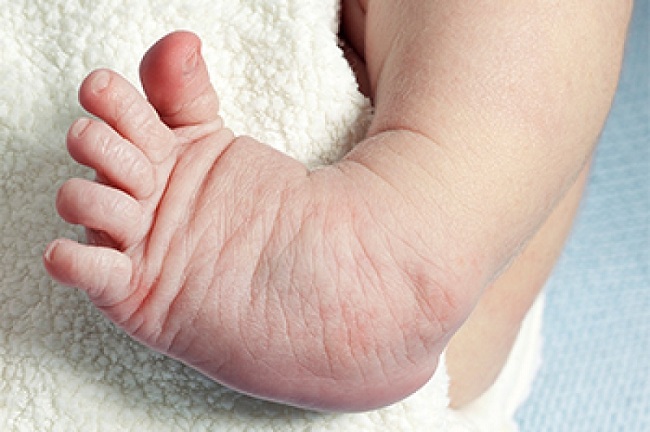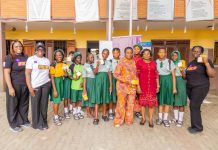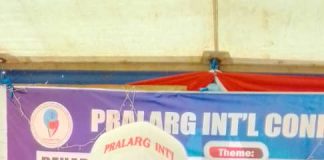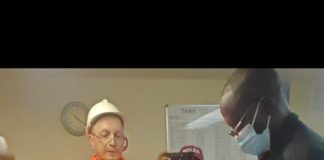🌿 Ruzu Non-Alcoholic Herbal Bitters
Ruzu Non-Alcoholic Herbal Bitters is a natural health supplement specially formulated to:
- ✅ Promote general wellness
- ✅ Detoxify the body
- ✅ Support the treatment of various ailments
Made from a powerful blend of 100% organic and medicinal herbs, Ruzu is completely alcohol-free, making it ideal for:
- 👪 All age groups
- 🌱 Health-conscious individuals
- 🌿 Anyone seeking non-alcoholic herbal remedies
Whether you're looking to boost your vitality, cleanse your system, or support healing the natural way, Ruzu Bitters offers a trusted herbal solution.
When Mrs. Helen Adebayo’s son was born with a deformed limb, she wondered how she would ever cope. At that moment, she felt something break inside her. Seeing his feet contorted at such sharp angles, the only thing that seemed clear to her was that he would never be able to walk. The responsibility felt crushing.
“I was so distressed. I couldn’t understand it. I wondered what could have gone wrong because I never missed my antenatal visit. I kept thinking, If he’s disabled, how will I ever be able to look after him?” said Mrs. Adebayo, a 30-year-old petty trader at Ikereku.
Shock, anger, self-blame, guilt, and depression are among the emotions felt by many families like that of Mrs Adebayo when the diagnosis is first made of this condition that results in one or both feet being turned down and pointing inwards.
Clubfoot is a congenital (present at birth) condition in which a baby’s foot or feet turn inward. It won’t go away on its own, but with early treatment, children experience good results. About 1 out of every 1,000 newborns will have clubfoot, which makes it one of the most common congenital foot deformities.
Dr James Adeniran, an orthopaedic surgeon at the Federal Medical Centre Bida in Niger State, said clubfoot can be identified in a baby at birth, and usually, immediately after birth, the midwife will notice.
“There’s a test they usually do. They will bend the foot to see if the surface of the foot can touch the surface of the leg. If it can touch it, that foot is normal. But if it cannot, then there’s a problem with that foot,” he declared.
Dr Adeniran spoke at a day training on “Early Detection and Referral of Clubfoot Treatment” in Oyo State for Clubfoot Ambassadors by PLAN Health Advocacy and Development Foundation (PLAN Foundation) with support from MiracleFeet, an international non-profit organisation that provides clubfoot treatment to children around the world.
With treatment, 95% can walk, run, and move for life. According to him, one of the modes of correcting clubfoot is a simple non-surgical procedure known as the Ponseti method.
The method involves using plaster casts to correct the position of the feet, followed by a tenotomy—a simple procedure that allows the foot to fully straighten. A foot abduction brace is then worn to prevent relapse. It is inexpensive, simple, effective, and requires no major surgery.
The first phase of the treatment is the manipulation and application of a cast, which will last for four to six weeks in babies that are less than two years old. If they are between two and five, they last up to eight weeks. The first three months will require that they wear the special shoes for 23 hours. It’s only when they want to bathe the child that they will remove the shoes.
After the first three months, they will be wearing the shoes when they want to sleep at night, and that will continue for four to five years because the deformity has a tendency to reoccur. But if they are able to, it can reoccur again. But before that time, it can reoccur if they fail to wear the prescribed shoes.
Dr Adeniran, however, said babies with clubfoot need treatment to correct the problem, and the earlier it is done, the better. This preferably should be done a few weeks after birth.
“Parents should know that this deformity is correctable and is better treated immediately after the baby is born. But once the baby is older, it becomes more difficult. The child will not be able to wear normal shoes, will be complaining of pain, and won’t be able to get involved in things like playing football.
“The child will have low self-esteem, unable to interact with other people. Going to school may be a challenge because people will be laughing at him or her.”
Dr Adediran, however, declared that through MiracleFeet and its partners, children born with clubfeet that are less than five years old can access free correction in many hospitals across Nigeria, including Ring Road State Specialist Hospital, Ibadan; Bowen University Teaching Hospital, Ogbomoso; Lagos University Teaching Hospital (LUTH); University of Maiduguri; and Federal Medical Centre Bida.
He added, “The vision is that by 2030 no child should have an abnormal foot as MiracleFeet continues to work closely with its five partners to integrate clubfoot treatment into the existing public healthcare system across Nigeria.”
Executive Director of PLAN Foundation, Mr. Obatunde Oladapo, assured that the treatment of children in the partnerships is free and an opportunity for children born with clubfoot in Oyo State to have their feet corrected.
“No child is too young to be treated for this abnormality of the foot. Indigent parents will also have transport money for them to be able to come to the clinic because they must not default. We assure a treatment success rate of over 90%. Parents should take advantage of this opportunity to put their children back on their feet and live a normal life.
CAST administrator for Positive Care Living Foundation, Mr. John Echeozo, said Nigeria’s government should prioritize clubfoot treatment for children over other childhood infections because of its implications for their future.
“The government should find a way to support this project by including children above five years. Also, the many myths and misconceptions in the community, like it can be inherited or it is due to a curse, spell, or the mother’s sin, need to be dispelled,” he added.
READ ALSO: Club foot, inborn limb deformity treatable in 95 percent of babies — Experts
















